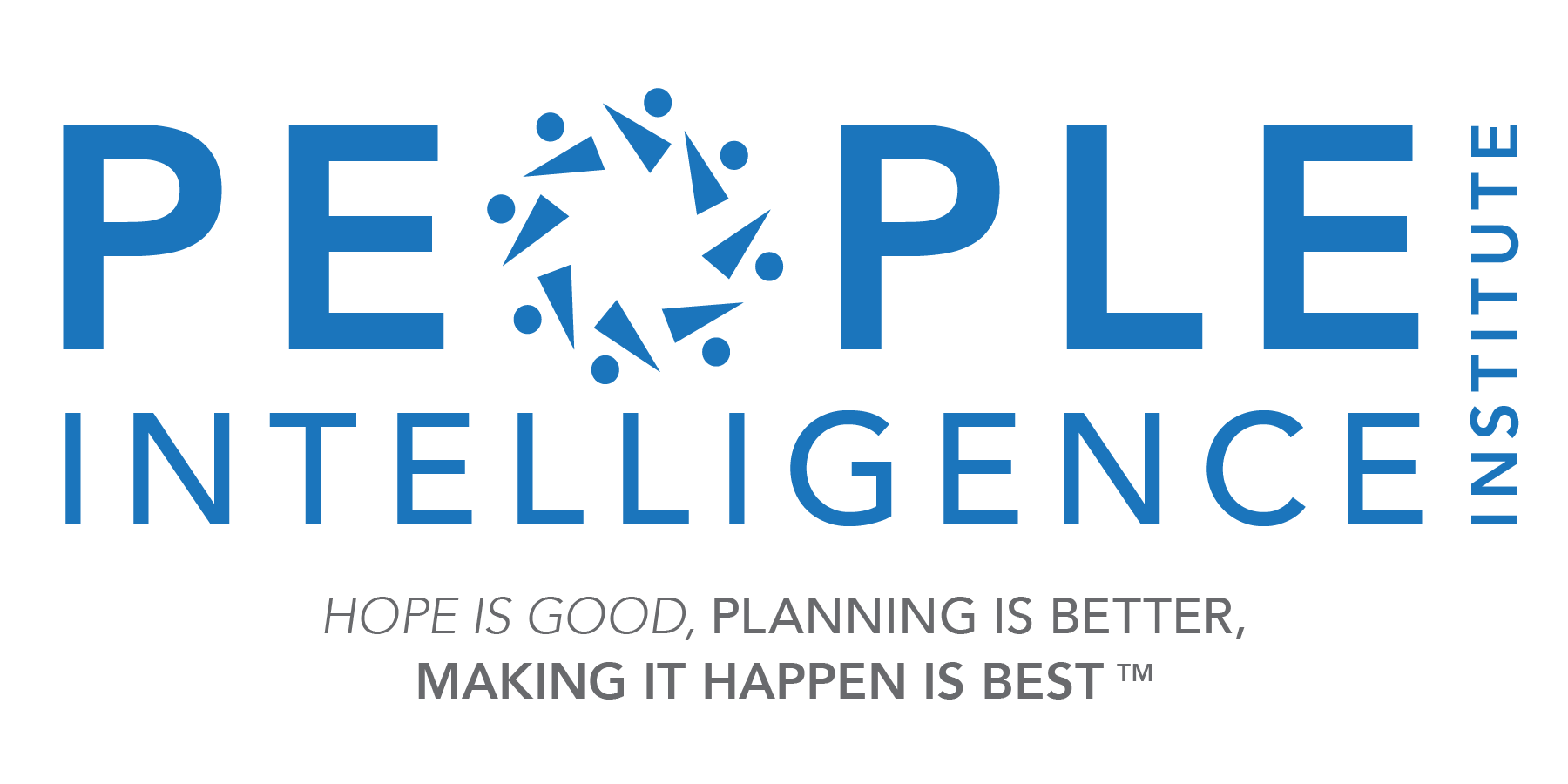"This course has helped train my eye and my mind to see more emotions in others, and as a result, have more successful interactions with others when they are emotional. I am more likely to notice things earlier, before escalation, when the potential to make better choices is stronger."
Read MoreThe Upside of Deception
Human emotions are present in the nucleus of most every lie. Learning to understand them (Emotional Intelligence) and recognize them (Emotional Competency) are the lever and fulcrum of revealing lies and more importantly, uncovering the truth. It's not enough to know that a deception has occurred; in order to move forward, we must know the truth.
Not every lie is told with malice. Not every reason to hold back is rooted in wickedness or a compelling need to remain in the dark with one's deeds.
Indeed, some lies are necessary to save lives. A commander would not admit to having a plan in place to infiltrate a terror organization or attack enemy combatants. That type of knowledge in the wrong hands could lead to a preemptive strike by the terrorists against the interests of that nation and possibly cost the lives of civilians. So in this scenario the truth is kept purposely hidden and some might argue there is a moral imperative to do so.
Some lies are told to save the life of the liar. A young man escaping Nazi Germany would not be faulted for denying his faith, if only to survive long enough to get to a better position from which to defend it, or simply to save his family.
Lies are told to keep someone hopeful who may be distraught over a gravely ill family member. Lies are told to retain friendships, avoid conflict or shield someone from unnecessary stresses. Many a grandparent has been kept in the dark about a grandchild's arrest or accident until the situation is resolved and normalcy restored. It's the 'no harm - no foul' rule. The list of situations in which it may be argued that it is permissible to lie is as complicated as the human needs for acceptance, trust, peace of mind or a little more time.
Given that there are so many circumstances dictated by environmental pressures about which information must be misrepresented and sometimes omitted, and so many ethical arguments about whether or not telling lies of any kind is appropriate, we will focus on those instances when we must engage in difficult conversations. They may be work-related or personal but they somehow affect the future of the place where you stand and the people with whom you share that place.
Human interaction is often challenging and confusing. You would think we'd be better at it by now. We've been at it for thousands of years. We've developed intricate languages, symbols and facial expressions to communicate our thoughts. But instead of feeling gratified, interacting with our own species leaves us unsatisfied, frustrated, even exasperated. We feel shortchanged, unconnected or distant. When the truth is repressed, barriers to effective engagement are even more difficult to overcome.
The truth is usually known to one party and suspected by another. It does, after all, exist. The challenge is for both parties to feel comfortable with arriving at a common perception of the truth regardless of its consequences. It's about the desire to be open and the willingness to accept it. It's about mutual trust and the utility of honest communication. The point is not to judge the merits of the true thing, but merely to acknowledge it. It's a better place to start.
What keeps someone from expressing the truth is a feeling or presumption that the revelation will somehow degrade the relationship, perhaps irreparably so. They often want to be honest but feel they cannot or should not. For one reason, real or perceived, the one holding on to the truth is tangled in the vines of deceit. The real truth is inexorably tied to one emotion or another: anger, fear, joy, sadness and many more. It is precisely those emotions which we must look toward as the guideposts to truthfulness.
The listener must learn to observe the underlying emotions pressing themselves against the glass like a beggar at an upscale restaurant, silently pleading to be let in, or let out. The listener must look past what is obvious and ordinary, so they can see the waif in the window and recognize it for what it is, to let it in, accept it, feed it, respect it and move forward.
The End of Daze

Fine-Tuning Your Perception Skills
Self-defense experts urge their clients to be in "Condition Yellow" when engaged in their daily routine, particularly when alone. It's a level of awareness that prevents them from being surprised by a sudden attack. First introduced by Jeff Cooper, a former US Marine, pistol expert and writer; these conditions (white, yellow, orange, red) describe our degree of attentiveness to our surroundings and the people within them.
In condition white, you are unaware, inattentive or downright oblivious. You are shocked when something happens, "I did not see that coming." Cooper and other protective experts talk about remaining in Condition Yellow to prevent an attack in the first place, to seem less vulnerable to a potential predator. Leave Condition White for poolside in the Caribbean.
Conditions Orange and Red refer to the imminent attack and the actual fight, but the bulk of the instruction tends to be about being in a state of readiness - of being switched on so you're not walking around in a fog.
Conditioned Success
Can this level of attentiveness serve us in situations that don't involve physical danger? Can it help us navigate complicated contract talks or merger strategies? Can these skills switch on the high-beams when we're in unknown territory?
By learning how to be more attentive to emotional states of family members, co-workers and counterparts in business relationships, we can head off potential missteps. We can begin to understand why something doesn't feel right and act appropriately. We often dismiss our own emotional reactions to conversations precisely because we are trained to be detached in business. We mistakenly believe emotions cloud our judgment, when in fact, they clarify it. Rather than spotting behavioral nuances we ignore them. By missing important cues we are caught off-guard and later we just don't understand how we didn't see it coming.
Here's the trick. First you must learn what to pay attention to. You must raise your level of emotional awareness. Emotions are at the heart of every deed and every interaction, whether carried out openly or deceitfully. Emotional Competency is an understanding of how emotions drive human behavior so we can see them more clearly as we communicate, negotiate and mediate all manner of human interface.
Knowing how to recognize the underlying emotions gives you something on which to focus, so you're not just hearing words, but 'getting' the truth of any situation. Increasing our awareness of emotions moves us out of Condition White and into the Yellow, where we are alert, aware, in control and focused.
Emotional Intelligence is often written about as being innate, the 'je ne sais quoi' that successful people possess in natural abundance. But Emotional Competency is a skill-set, proven thru decades of scientific and clinical research. A golf instructor can spot a subtle shift in your hips. A music teacher can hear a mistake in what seems to the rest of us a flawless performance. Good or bad, they know what to look for. You can be emotionally competent. You can spot deceit. You can learn to recognize how someone truly feels - but first you must learn what to look for.
The Architecture of Emotional Competency

"All architecture is a shelter, all great architecture is the design of space that contains, cuddles, exalts or stimulates the persons in that space." - Phillip Johnson
So what kind of space have you created for your employees? Is it one where individuals are physically isolated from one another, making human contact a chore? Are they essentially detached from the process in the place of business, segregated in the name of focus?
The idea that the space is either evocative, inspiring, creative and interactive; or is compartmentalized, inhibitive, cold and foreboding, can speak less to the physical space and more to the leadership that influences the dynamic within that space. The leadership can function as the architects of the kind of space where employees either flourish or whither.
Steven Johnson, in his book, "Where Good Ideas Come From", explains how the coffee houses of 17th-century England fostered the Age of Enlightenment. It was the space - the chaotic, communal atmosphere that lent itself to the emotionally open and honest exchange of ideas. Johnson examines the impact the coffee houses had upon the advancement of western culture and civilization. The coffee houses were the places where ideas could, well, percolate. The best ideas develop over time. They are a bundle of smaller ideas that need time to gestate and a place to be born.
Ideation, the formation of ideas, is a process, like an architectural drawing on a cocktail napkin that becomes a functional piece of art. It begins with free expression. In a space where people feel free to be honest and uninhibited, creativity and innovation will blossom.
The idea of place is not simply about steel and concrete, but about creating an open dialogue. Open space engenders open minds - for ideas, congeniality, innovation and forward-thinking. Just as the principal's office can spark dread in a schoolboy, a work space seen as open to new ideas and truthful human interaction can relieve the stress that stifles imagination.
Eugene Kohn of KPF Architecture spoke about what goes on inside of buildings. "Our goal as architects is to create buildings that inspire people to do whatever it is in that space they need to do. That inspiration comes from within the building as much as from the way it looks from the outside." And so it goes for the attitude projected by management. Are you creating corrals or space to grow?
Architecture in both the practical and artistic sense is a process, indeed the only art form in which the developmental stages (blueprints, drawings, models) are revered along with the finished product. Human interaction is a process of exposition, the testing of ideas and knowledge; its application and review, none of which can happen if employees aren't part of the process and managers aren't attuned to the needs of the work force.
Employees need to feel comfortable in the place and view it as common ground, which will propagate a sense of ownership. In this place, the connections all play a role, as each rivet in the steel supports the structure.
In his elegant book, Why Architecture Matters, Paul Goldberger said, "Architecture is about the making of place, and the making of memory. Architecture gives us joy if we are lucky, and it gives us satisfaction and comfort, but it also connects us to our neighbors, since the architecture of a town or a city is the physical expression of common ground. It is what we share, if only because the architecture of a community is one of the few forms of experience that everyone partakes in: the sharing of place."
The art of architecture is obvious, as is the public face of an organization. But in buildings as well as organizations, the underlying structure supports the mission. Complex interfacing systems keep structures functioning as do complicated human interactions, of which leaders must remain keenly aware. To say the full business process is effective without emotional intelligence is like an architect neglecting an essential structural element. The architect gives equal gravitas to aesthetics and function. It all matters.
Image courtesy of khunaspix / FreeDigitalPhotos.net
Cleaning Out the Attic

Managers often operate under the presumption that emotions have no place at work and they are generally right with regard to financial or economic decisions and operational maneuvers. However, their employees are sentient beings. Emotions and the role they play in the human factor cannot be dismissed.
Whether or not we want to acknowledge them, emotions exist because people exist. They are part and parcel of every person we know. Managers feel they have to be disconnected, so that the detachment can make it easier to make decisions based upon facts, devoid of emotion. That perspective has merits of course but there is a pitfall: the complete repression of all emotions while in work mode. It leads to neglecting emotion in all work-related interactions and can prevent them from 'getting' the human component of the work environment. In short; it interferes with empathy.
Think about the difference empathy makes in our interpersonal relationships - in how we decide to talk to people, how much we decide to listen, how deeply we care. There is an emotional component underpinning every action people take and by tapping in to our emotional intelligence, that enhanced sense of empathy will make us better managers of people. By denying our own emotions we are inhibiting our ability to notice them in others. If we don't understand them, we can't understand motivation, desire, inspiration, commitment and honesty. Is the team really buying into the plan or just paying lip service?
Do you ever feel as though you aren't getting through to people? Have you noticed that employees only come to certain managers with their concerns? Do employees complain at reviews that they don't feel as of they matter? It may be time to clean out the attic...
It's Musty Up Here
Maybe it's time to get up in the attic and dust off your old trophies, read your old journals, sift thru some photos and enjoy the memories, those moments in time that have shaped your life - the laughter, and even the tears. What moments brought you the greatest joy? What single event can still make you feel exhilarated?
How would a trip to the attic make you feel? Might you feel rejuvenated, humble, romantic, artistic and perhaps, human? Your employees feel this way every day and so do their families. The ability to understand how emotions effect change is vital to emotional competency. This competency is an improvable skill those with high EQ possess naturally, but it can be developed with practice.
Some leaders work so hard to remove themselves from emotion in the name of pragmatism they lose the ability to communicate effectively with the very people who can help them make better decisions. They simply forget how to talk to people. The Joe Friday, "just the facts ma'am" approach can leave employees feeling disconnected. That feeling of being under-appreciated or excluded is one of the top reasons for employee discontent.
A trip to the attic can help to find new uses for stored emotions such as confidence, compassion, joy, sadness and connectedness. Revisit Mazlow's Hierarchy of Human Needs ( http://www.maslow.com/) and see how important belonging is. By cultivating empathy, by recognizing and understanding the relevance of emotions in human behavior, leaders can embrace what they find in the attic. They can blow off the dust and put their emotions back in the toolbox, right alongside pragmatism.
Image courtesy of jscreationz / FreeDigitalPhotos.net
